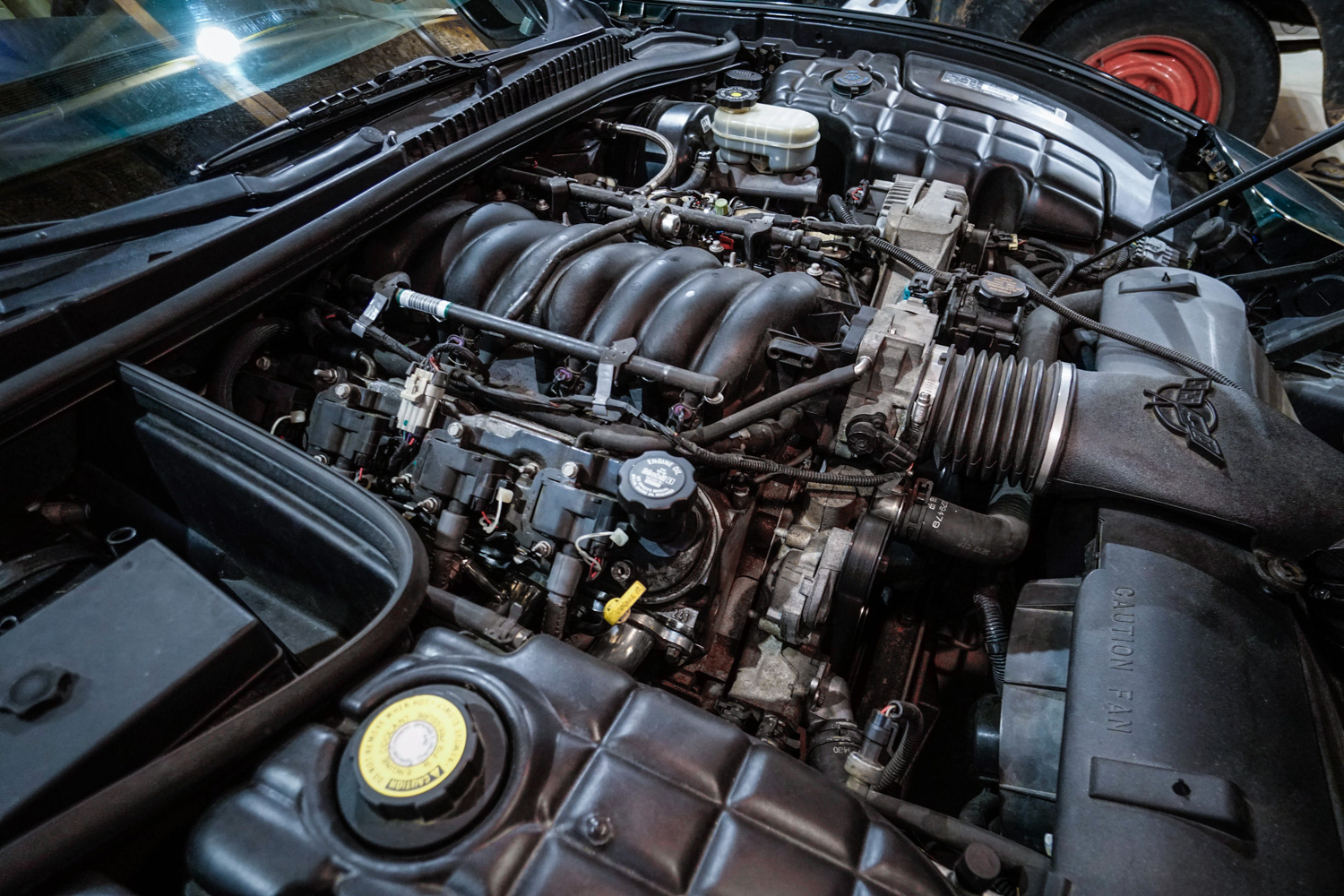5 features that make the C5 Corvette special
Chevrolet’s fifth-generation Corvette has a lot going for it these days—sleek styling, brutish performance, infinite options for personalization, and, best of all, affordability. It’s true, C5 ’Vettes are laughably cheap for the level of car offered, and it’s exactly the reason why I picked one up at the end of last November.
Now that spring has arrived here in Michigan (well, at least for the moment), I’ve finally had the opportunity to get out and enjoy my 2001 Dark Bowling Green Metallic Coupe on the open road. Thankfully, my patience paid off, as the ’Vette is an absolute blast to drive. More importantly, however, the car just feels like nothing else from behind the wheel. Here are five features that make the C5 special.
Hydroformed Frame Rails

Trick suspension setups and big horsepower numbers are meaningless if they don’t have a rock-solid foundation to connect to. GM spent considerable effort in making the fifth-gen Corvette as rigid as possible, and it shows. Grip was high right out of the gate, with basic coupes pulling over .90 g on the skidpad despite being equipped with thoroughly awful run-flat tires.
Utilizing a special process called hydroforming, two 13-foot-long steel tubes were filled with water pressurized to 7000 psi and bent to shape without requiring any heat. The structure proved to be four times stiffer than the C4’s, eliminating much of the shakes, rattles, and chassis flex that plagued that car. Now if only those stock seats held you in just a little bit tighter.
Pop-up headlights

Hidden headlights were a slick and desirable styling upgrade throughout the 1970s, ’80s, and early ’90s, but by the C5’s 1997 debut, their popularity was dwindling. One could make an argument for its aerodynamic benefits contributing to the car’s slippery 0.29 drag coefficient, but the fact is that they’re just plain cool. At night, it’s difficult not to think you’re driving the Batmobile while staring down the sculpted hood punctuated by the headlight mechanisms.
Addorning ’Vettes since 1963, pop-ups were a design staple nearly as long standing as quad taillights (which were introduced for the ’61 model year). By the end of its production run in 2004, the C5 and Lotus Esprit remained as the final holdouts of the fashion statement, making the feature an uncommon sight on today’s roads.
Head-up display

After driving around the past week in a vehicle equipped with a head-up display, I’m now convinced that any time engineers have the chance to incorporate fighter-jet technology into an automobile, they should go for it. First offered as an option in 1998, the C5’s HUD projects speed, RPM, oil pressure, and a number of other vitals up onto the windscreen right in front of the driver. Controls for information, brightness, and height adjustment are located on the dash, allowing for easy on-the-fly adjustment.
What could have been an opportunity for GM to market a cheap, gimmicky device, actually turned out to be a very useful piece of tech, one that’s quickly becoming a favorite feature of mine. It must be loved among other owners, too, as the HUD has found its way into the subsequent C6 and C7 generation cars.
Targa Roof

An added benefit of having an ultra-stiff chassis is the ability to offer topless versions of the car with virtually no change in rigidity. Yes, removable targa roofs and t-tops had been offered on past Corvettes, but the C5 perfected it.
Un-clamp the three latches holding the top to the frame, lift off and secure it in the trunk with two convenient hold-downs, and you have a near-convertible experience. Best of all, when the targa’s back in place road and wind noise is cut down to what you’d expect from a solid-roof car.
LS1 V-8

General Motors’ LS-series V-8 engines are so popular today that their use in muscle car engine swaps verges on being a cliche. At its introduction in the 1997 C5, however, the LS1 was a true game changer. Prior to the 3rd-generation small-block, all-aluminum V-8s with high-flow cylinder heads and fuel injection were reserved as racing technology—now it was available not only in Corvettes, but also pickups and SUVs.
Love for the engine can be attributed to its low mass, compact dimensions, and massive aftermarket, making big horsepower increases stupidly simple. My car might have emerged from Bowling Green with only 350 hp, but a ported throttle body, cold air intake, long-tube headers, and Brian Tooley Racing camshaft have it pumping out more than 400 horses. Better yet, few expect a dark-green ’Vette with a tan interior to have such a rowdy idle, making onlookers’ reactions to a cold start one of life’s simple pleasures.


